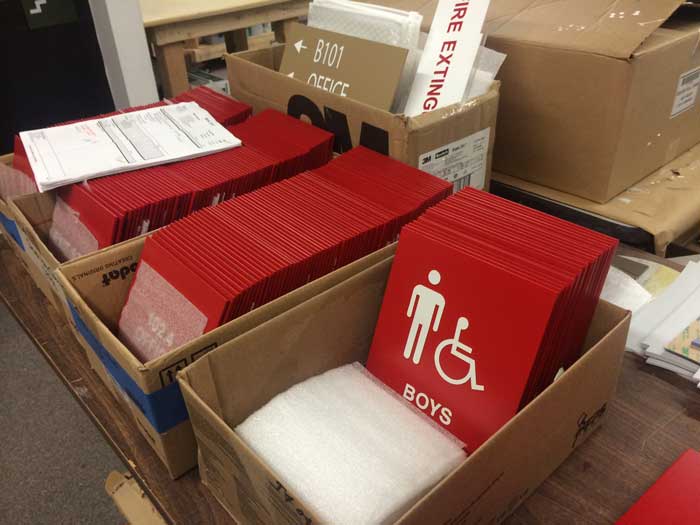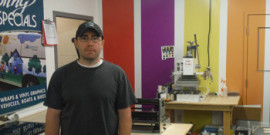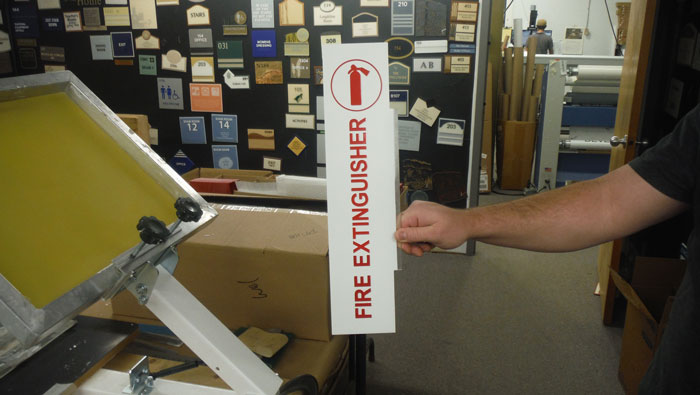
This is a guest post by Mike Santos for Nova Polymers. It orginially appeared on their blog on October 15, 2014.
DOING PHOTOPOLYMER RIGHT
At Nova Polymer we work with dozens of sign fabricators every year as educators and advisors. The goal has not only been to integrate photopolymer methodologies into a fabricator’s overall practice but also to ensure that the process can be efficient and profitable. This requires extensive effort on behalf of the employees who manage the process. Their efforts and ongoing education can turn photopolymer production into a high level art that generates quality and profitable products.
 One such fabricator is Chris Carey, an employee of Welch Sign in Scarborough, Maine. Welch is a highly successful regional planner and fabricator of complex wayfinding sign systems. Eighteen months ago they were awarded a project that required hundreds of photopolymer signs and decided to use the opportunity to take the plunge into integrating photopolymer into their shop.
One such fabricator is Chris Carey, an employee of Welch Sign in Scarborough, Maine. Welch is a highly successful regional planner and fabricator of complex wayfinding sign systems. Eighteen months ago they were awarded a project that required hundreds of photopolymer signs and decided to use the opportunity to take the plunge into integrating photopolymer into their shop.
“We went from one project and after four months of getting comfortable with the process we ramped up to about 80% of my time on photopolymer,” stated Carey who clearly looks comfortable in the clean workshop surrounded by sign projects at various stages of completion, shop drawings and sign samples. Carey continues; “Once we were able to get up to 100-300 signs per day we were able to tweak the process to make it more efficient and improve quality, mainly by changing the bulbs and refining the tipping process with the painter.”
Carey also makes sure to stay in close contact with Nova Polymer, mainly through the customer service help line. “Starting up I was constantly on the phone with customer service and this continues even now.” Carey sees this constant contact and feedback important to success, particularly when pursuing new projects.
Moving forward, Welch is looking to be more proactive with the photopolymer technology, experimenting with new substrates including sustainable materials like 3Form. “We would like to see designers take advantage of all the interesting things that photopolymer can do”, proclaims Carey who is working with Welch to provide samples as well as a gallery of examples.
With an efficient process, talented personnel and innovative management it is clear that Welch made a successful bet moving over to photopolymer. Carey concludes, ”We are operating at five times the speed and efficiency as before and now have more time to be creative and realize the potential of the material.”

